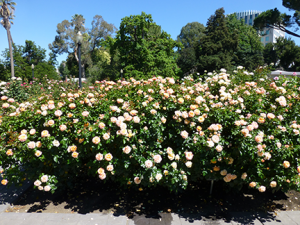What Does an HOA Landscape Assessment Entail?
 In order to conduct a thorough, comprehensive HOA landscape review, WBA performs an assessment of all aspects of the landscape, assuring there is operational efficiency and value received for money spent. This includes, but does not limit turf, trees, slopes, gardens, landscape maintenance operations, small equipment repair services, irrigation evaluation, soil and water analysis, pesticide use, compost operation, interviewing staff, rain event action plans, landscape renovation and landscape support services.
In order to conduct a thorough, comprehensive HOA landscape review, WBA performs an assessment of all aspects of the landscape, assuring there is operational efficiency and value received for money spent. This includes, but does not limit turf, trees, slopes, gardens, landscape maintenance operations, small equipment repair services, irrigation evaluation, soil and water analysis, pesticide use, compost operation, interviewing staff, rain event action plans, landscape renovation and landscape support services.
WBA will review the Lawn Maintenance for all turf, noting the overall turf color, health and vigor, the height of the cut, fertility and soil moisture content adjusted for the mowing operations schedule.
Shrub-Bed Maintenance is also included in this review as well as tasks involved, include pruning, weeding, raking, edging planters, fertilizing as required, mulching annually, and responding to residents’ requests in accordance with policy. Slope maintenance programs will be assessed to assure they are in line with industry standards.
A complete review of the pesticide storage facility will be conducted to determine pest control methodologies employed by the Department. Our review focuses closely on the safe and effective use of commercial pesticides that are utilized in the operation, assessing whether all registered materials (formulations classified as pesticides through the inclusion of an EPA Registration Number) are stored properly and locked in an area that allowed for the entry of only trained and approved personnel.
WBA will conduct an irrigation evaluation on two separate areas of lawn and perform an irrigation audit to determine sprinkler uniformity and proper water output. After evaluating the lawn sprinklers for any maintenance problems (broken lines, clogged nozzles, tilted heads, etc.) a catch can test will be performed. The test is conducted to measure sprinkler distribution uniformity, and precipitation rate. Distribution uniformity measures how evenly the water is being applied to a given area, and precipitation rate measures water in inches per hour.
If the HOA has a compost operation, a tour of the facility will be conducted, checking for salinity, pH, heavy metals, and other undesirable constituents. Moisture levels and particle size will be assessed for correctness.
WBA will interview staff to determine what kinds of training may be needed, morale, and working conditions. Focus groups may be held in Spanish to provide for a wide look at what is happening with field personnel in the Landscape Division.
A comprehensive soil and water analysis will be conducted and the samples will be sent to a local laboratory, checking for chlorotic conditions, nitrogen levels, elevated soil salinity, and sodium values. The soil composition will be determined and recommendations will be made to improve soil fertility. Water samples will be taken to check for the two components in water quality that have the greatest affect in plant health: salts and sodium. Both of these are present in moderate amounts when using potable water, and require management strategies to keep levels from escalating. Reclaimed water doubles the concentration amounts of both salts and sodium. Other negative factors associated with the water quality will be an increase in chlorides, sulfates, bicarbonates, and nitrates.
If necessary, a review will be made of the small equipment repair division of the landscaping department for efficiency and effectiveness. WBA will also review any rain action event plans that are in place to determine if they are comprehensive and appropriate for storm management. The preparation involves the Landscape Division checking and clearing all drains and atrium weep-hole outlets. Any necessary emergency equipment is checked for operational readiness and secured for quick access.
A critical issue that is currently affecting large landscapes now, and in the future, will be water availability and escalating costs. Payoff periods will become shorter and more realistic in the near future for changing out landscapes that reduce turf areas, and replace high water use shrubs with low water use plants. WBA will assess landscape divisions to determine if they are implementing re-landscaping methods that affect slopes, shrub beds, islands, gate entries and the reduction of turf areas. Overall costs will be reduced through re-landscaping with site appropriate shrubs that minimize labor for maintenance and reduce the amount of greenwaste and the related processing costs.
In direct support of the landscape maintenance operations, the transport and delivery of mowing equipment, both to and from the various work sites, are done by the Landscape Support Services. Each foreman and supervisor must plan for daily needs of equipment, bulk materials, and field supplies in advance, and arrange to have them delivered on a scheduled basis. WBA will assess the mobilization of all crews leaving the main operations service yard to their various work stations.
